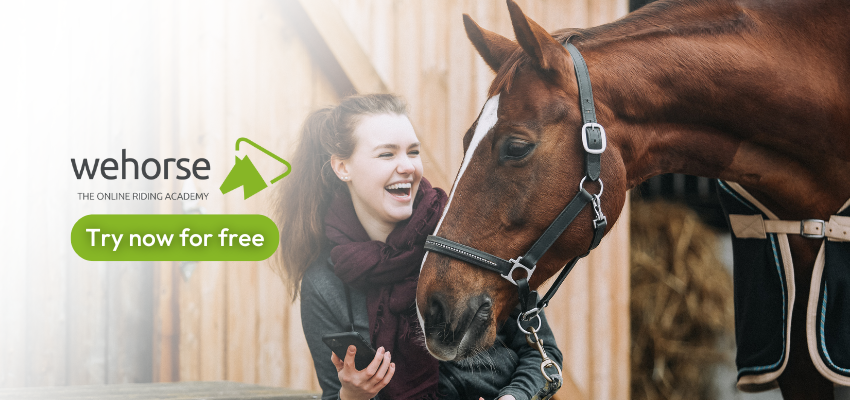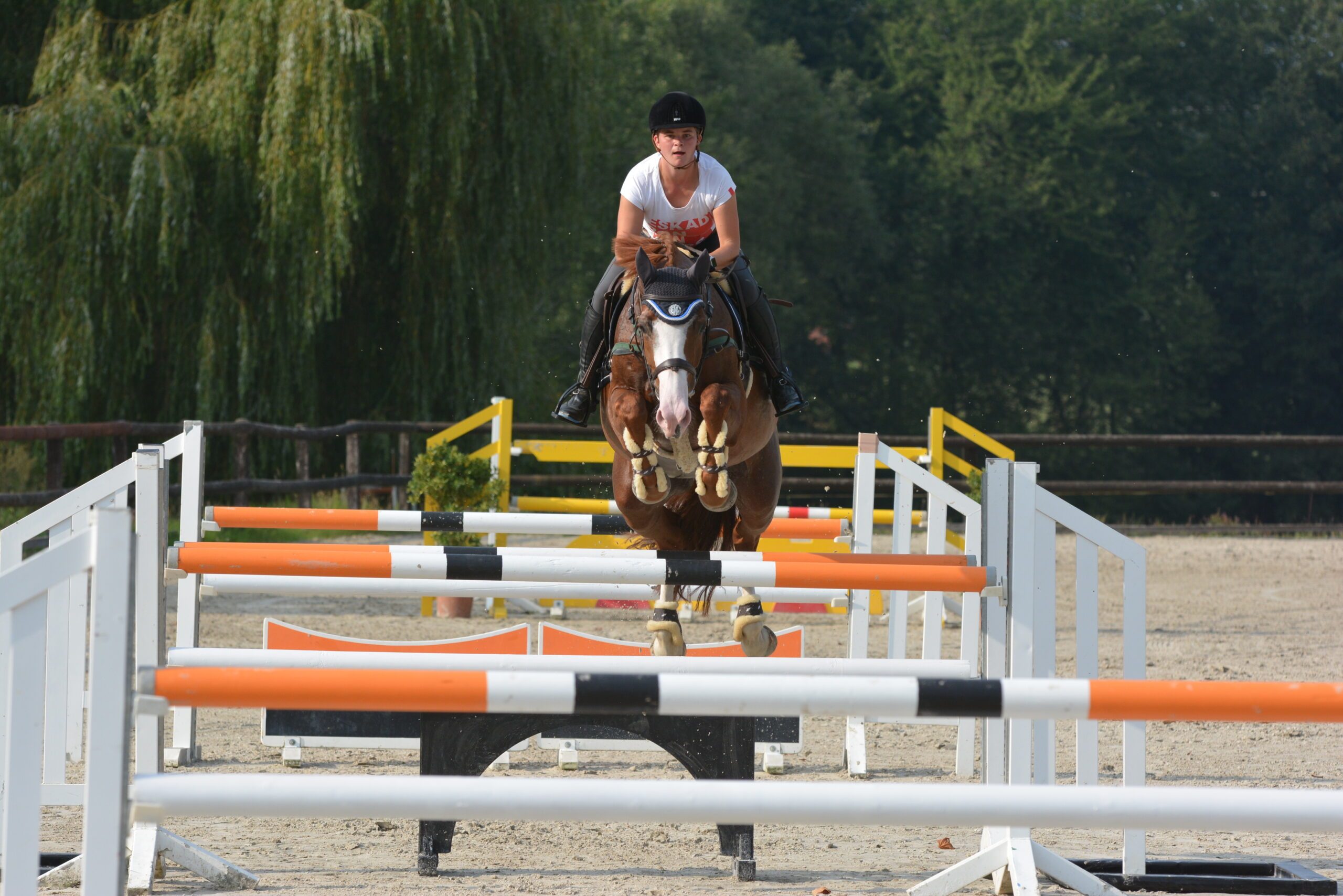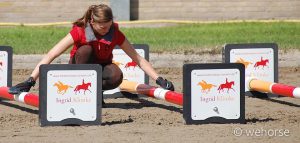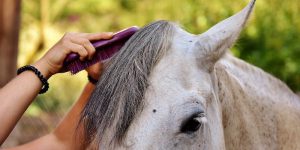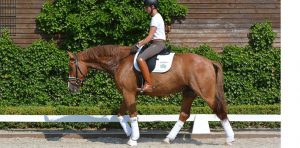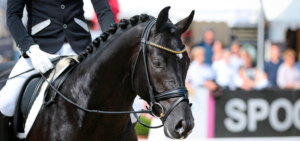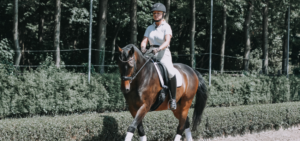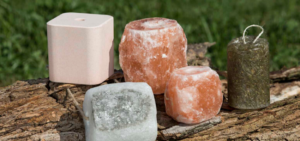Preparation is half the battle – this also applies to jumping courses. Just going for it is not the right strategy here. It’s safer and more fun for both horse and rider if you prepare for course jumping step-by-step. This article provides you with four basic challenges that you should master before you venture into your first big course.
And, if you’ve already started jumping courses, these exercises and tips may help you realize why things aren’t going perfectly yet. Only if you correct the causes can you fix the issues such as falling poles, poor distances, refusals, or even avoid falling off yourself!
Table of Contents
- The importance of dressage basics for jumping courses
- Being able to walk the course correctly
- Practice distances for jumping
- From small to large: jumping a course of crossrails and cavaletti
- Be prepared with confidence for the bigger courses
1. The importance of dressage basics for jumping courses
Learning dressage basics with your horse should always come before jumping; it’s common knowledge within the showjumping industry these days. Nevertheless, you can still find show jumpers and horses again and again who cannot ride the necessary dressage basics that are needed for a successful jumping course.
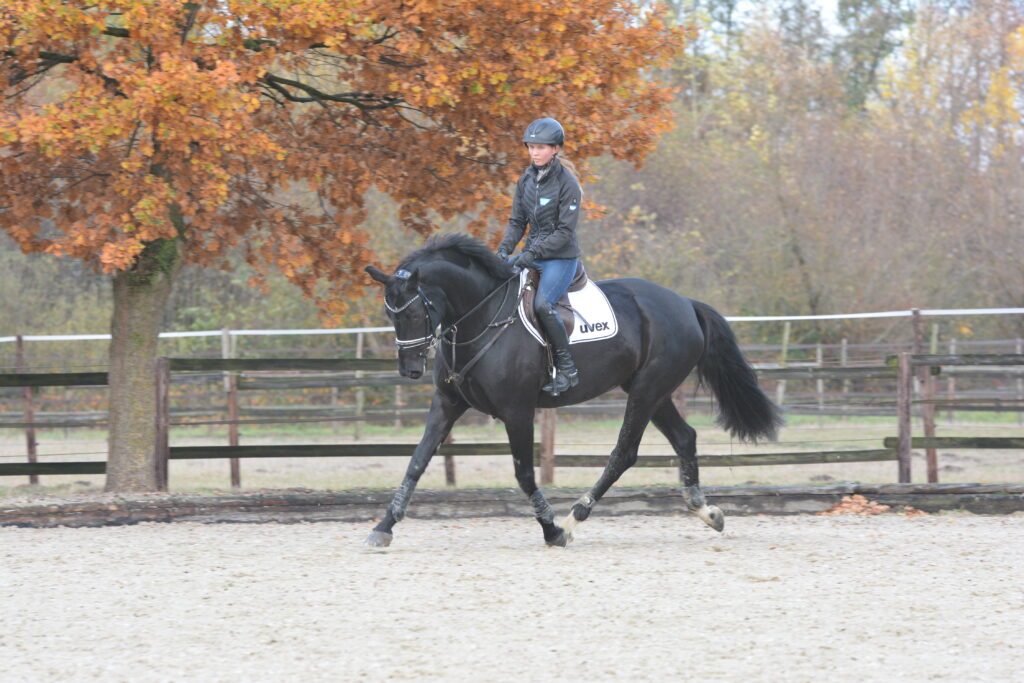
On our website you can review some basic dressage skills. Don’t worry, no pirouettes and half passes are required, but you do need to have your horse honestly in front of your leg. It’s important that you can go forward and come back easily in the trot and canter. This is not just a question of style but one of safety. Furthermore, you can refresh your knowledge on using your outside aids to “frame” your horse and prevent him from drifting sideways over the outside shoulder.
Why do these foundations have to be in place for successful jumping?
Firstly, to get through the course safely, successfully, and in a controlled manner. On the course, you have to have your horse 100% under control, be able to turn it quickly and tightly, know it from your seat and in front of your leg, ride fast changes in speed, and fully support it in its balance. None of this works if your horse doesn’t really respond to your aids, seeks contact, works through its back, or moves relaxed and permeable.
Second, to protect your horse from injury. Gymnastics is everything. How should your horse be able to react to the challenges of the course when it is stiff and immobile in the back and in the rest of the body? How is it supposed to balance the load on its legs and back with each jump? How is it supposed to jump pain-free on the regular?
So: With good dressage basics you are not only doing something good for yourself but above all for your horse.
Transitions
Riding transitions is always a good idea – both transitions between gaits and transitions within gaits. Flowing, controlled, and correct transitions – especially within the canter – is something you also need while riding courses. These tempo changes shouldn’t happen with a tug on the reins, but with a quiet aid from your balanced seat, without fighting or tugging.
Riding transitions in training and especially in the solution phase also serves as a means of collecting your horse.
2. Being able to walk the course correctly
Why do you walk a course before jumping? Not because it looks serious or because you just want to take a look at the obstacles. The latter, of course, but mainly to measure the distances and estimate the speed and the number of strides between the obstacles. To do this, you need to know what is important.
Learn the meter step
Can you immediately walk several steps in a row that are exactly one meter long? You should be able to do this in order to walk a course properly. If necessary, practice it with a tape measure until you get the feeling for your correct inseam length. This is the only way you can measure the distances between the obstacles correctly and prepare yourself for riding. You can also practice with your experienced riding instructor and adapt your steps to theirs.
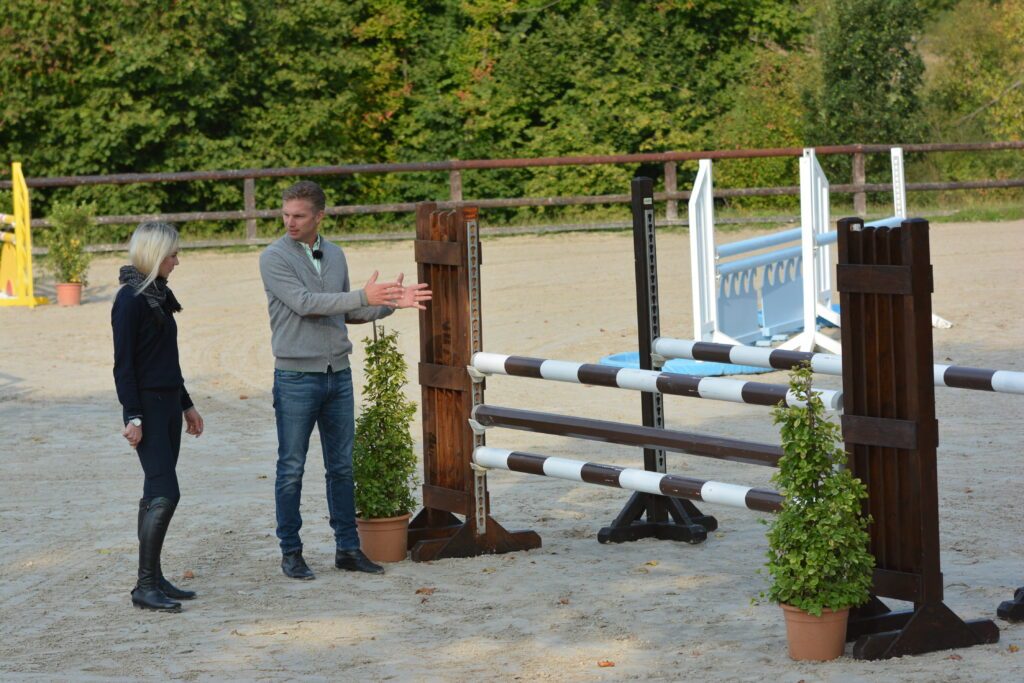
The canter stride of a large horse is about 12 feet long on average. In addition, of course, you have to consider that your horse needs space to land and jump off. This in turn varies depending on the height of the jumps.
In this wehorse article you will find a list of some common average measurements that can be a good guide.
3. Practice distances for jumping
Don’t tense up at the beginning and put yourself under pressure because you really want to see every distance immediately. There are show jumpers who have been riding for years and still cannot see every distance properly.
First focus on your rhythm. Find the right basic pace in the canter. Your riding instructor or an experienced friend can help you find this from the ground.
Then start with a cavaletti or a ground pole and try to canter over it without breaking your canter rhythm. Your upper body should barely noticeably move forward.
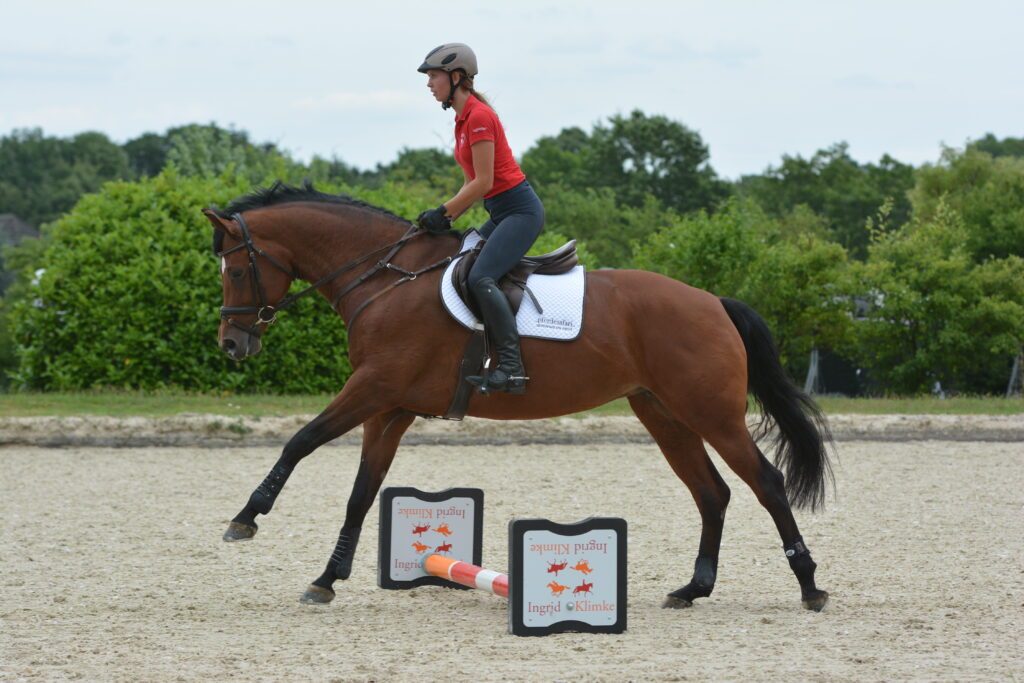
The point in time is crucial: Only when your horse has really jumped off do you go with it – many riders do this wrong and unsettle their horse as a result!
In preparation for jumping, cavaletti work helps both horse and rider to develop a feel for the correct take-off point. Learn how you can gradually increase the difficulty of the exercises and thereby improve coordination, balance, endurance, and reaction time.
4. From small to large: jumping a course of cross rails and cavaletti
Does maintaining your rhythm work over the ground bars and cavaletti? Do you know how to measure a distance? Have you worked on your dressage basics? Can you play with the distances and ride the same course but use a different distance, for example, go through the course once with four strides, and again with five strides?
If the time has come that you feel well-prepared for riding a course, you should still practice improving here from small to larger courses. Starting with a course of cross rails and/or cavaletti has several advantages. One is that you can learn from mistakes without risking injury or over-fatigue. Your horse can complete a cavaletti course with you several times. With higher jumps, it may be different.
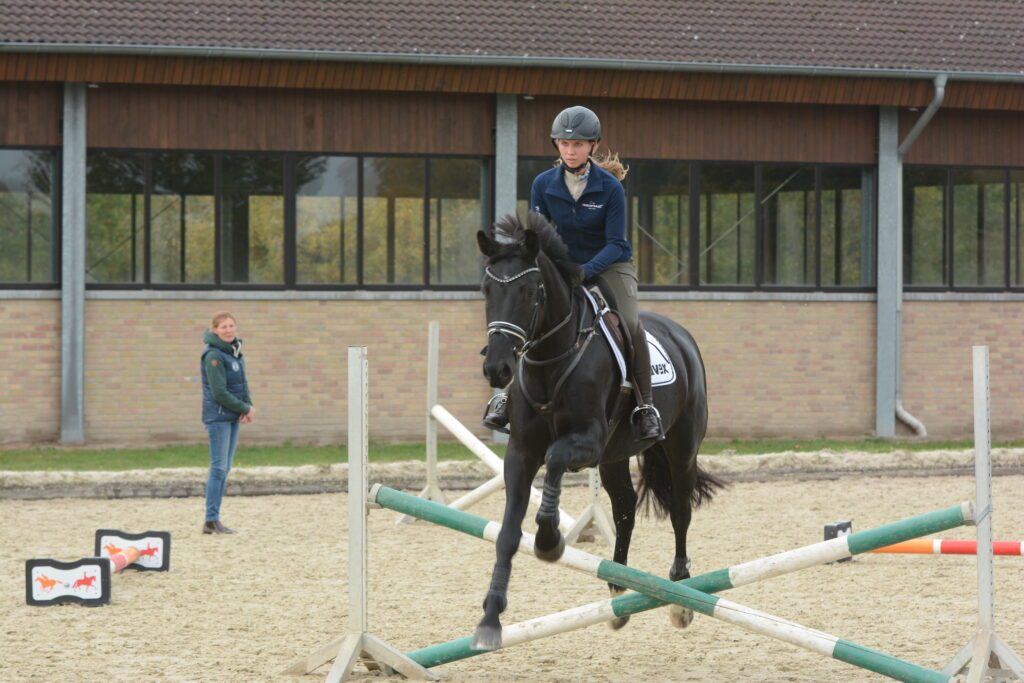
In addition, you can more easily compensate for mistakes in small obstacles and do not endanger yourself or your horse. And once the small jumps work safely, the leap to the next size up is not that big anymore!
5. Be prepared with confidence for the bigger courses
Confidence – of both the horse and the rider – is a factor that should not be underestimated in show jumping. Mutual trust and trust in yourself are important basis for getting through a jumping course safely.
Of course, this doesn’t happen overnight – but sticking with it is enormously worthwhile and may soon help you to get your first blue ribbon!
Do you want to dive into the world of showjumping with professional guidance? Then check out our website.
